Oleg Tsyba
Year of birth: 1983
Your education: Medical Academy. Self-education: Itten’s “The Art of Color and Form Theory”; Kandinsky’s “Point and Line to Plane”; Malevich’s “Black Square and Suprematism”; “How to Draw Comics the Marvel Way” by Stan Lee.
Describe your art in three words: Figurative painting
Your discipline: I enjoy painting the human figure.
Website | Instagram
You originally trained as a doctor and studied anatomy deeply. How does your medical background influence your artistic vision and technique?)
Hi! I think that a deeper study of anatomy really set me free.
Understanding the structure of the body on different levels — including the psycho-emotional one (I once even passed exams in psychology) — allows me to break or bend these rules to achieve my own form.
In my opinion, painting a beautiful body just as it is — that’s the most boring activity one could imagine.
If I don’t feel irony or a sense of drama in the work, I experience boredom of a cosmic scale — that’s what I mean when I talk about breaking the rules of anatomy.
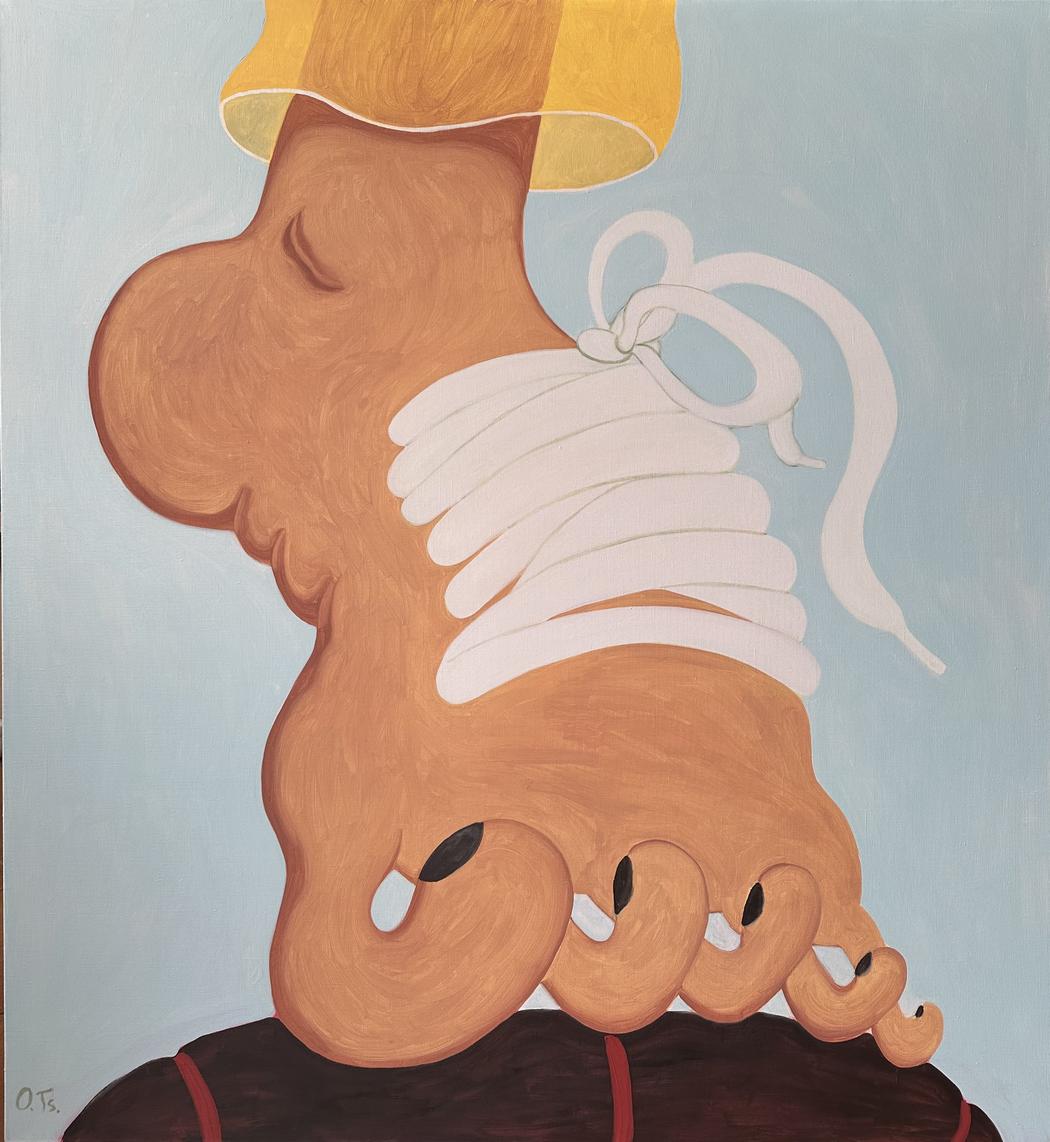 Oleg Tsyba | The Son Of Zeus Has The Best Basketball Sneakers
Oleg Tsyba | The Son Of Zeus Has The Best Basketball Sneakers
In the series MAMA, you explore motherhood from the perspective of a son and a father. What was the most challenging aspect of representing such a powerful and universal theme?
I think it’s the realization that for all of us — and for me in particular — there is a MOTHER.
If you stop for a moment to think where we all came from, the answer is simple: we literally emerged from another human being — and as you can guess, it definitely wasn’t the father.
Half of the people on this planet possess a superpower: to create another human being inside themselves, and yet we all continue to turn a blind eye to this fact.
I witnessed this from the front row, standing beside my wife, and I still can’t fully grasp how this is even possible. I mean, in theory everything made sense back in the department of obstetrics and gynecology, but in practice, I simply cannot comprehend or truly feel it.
In my story, I try to capture the symbols and signals that each of us sensed and saw as a child — the symbols of that very chthonic maternal energy. Undoubtedly, this force created everything around us — just as it can destroy it. I mean both Mother Nature, who can nurture a tree and then destroy a forest with drought, and a caring mother, whose words can either give you boundless confidence or instill insecurities and limitations that shape your emotions and behavior for the rest of your life.
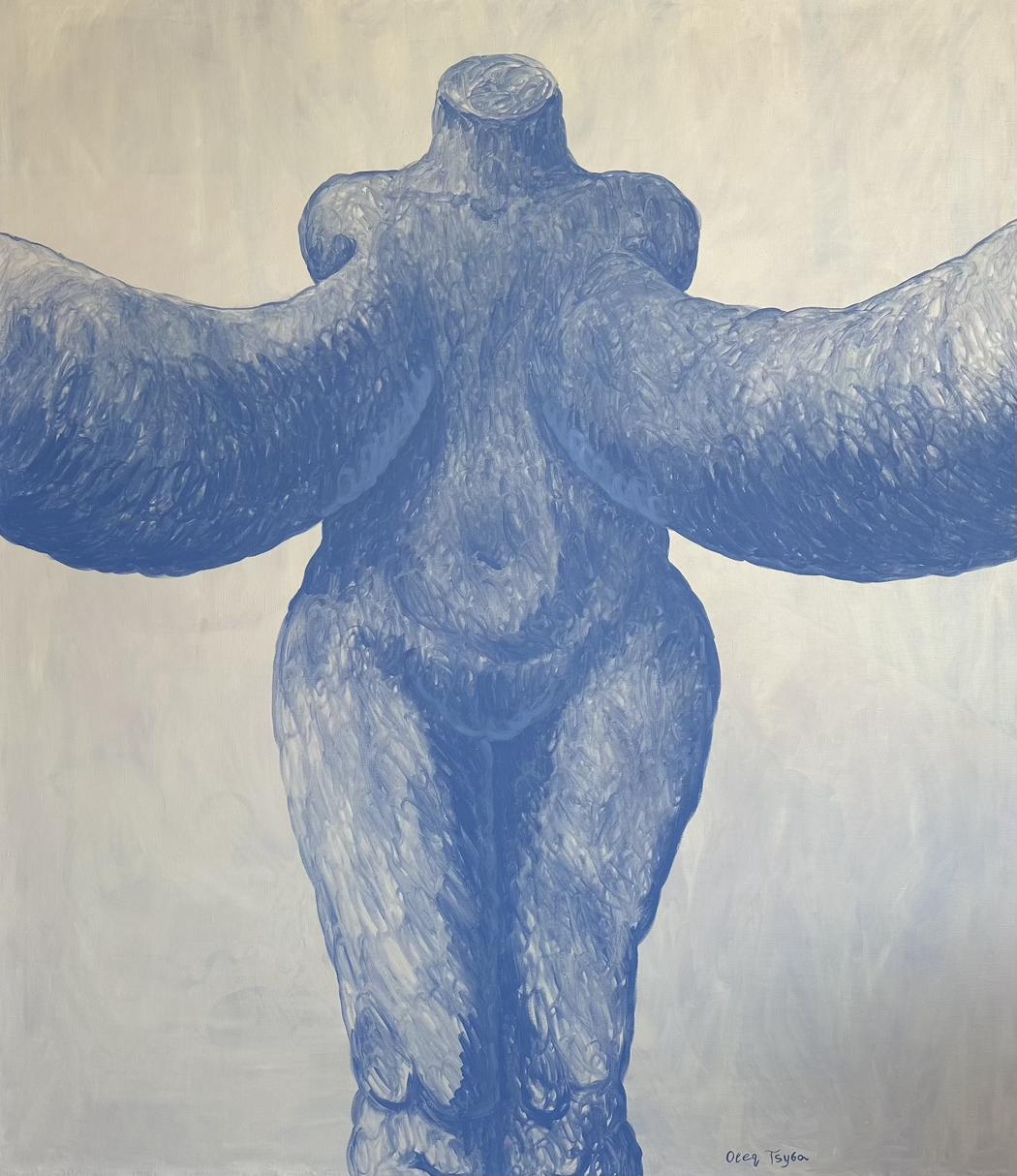 Oleg Tsyba | Mother
Oleg Tsyba | Mother
The MYTH series draws from Jung’s ideas of the collective unconscious. How do you see myths functioning in today’s world, and how do you reinterpret them on canvas?
Well yes, in psychology there is a phenomenon called the collective unconscious.
It’s somewhat like our unconditional reflexes (I actually had that topic on my physiology exam) — such as swallowing when there’s food or saliva in the mouth, sneezing, or instinctively pulling your hand away from a hot iron. No one teaches us these things — they are simply encoded in our DNA.
The same applies to psychological reflexes — or rather, reflections, behavioral and emotional patterns — which all people share, without exception. Even though we live in an age of lonely individuals, we still feel connected to others, sometimes even to those far away from us. According to Jung, myth is one of the ways this connection and these feelings manifest themselves on the surface.
And Sigmund Freud (incidentally, the uncle of one of my favorite artists, Lucian Freud) even found a link between myths and the delusional states of the mentally ill. So myth is something we understand intuitively, even when we don’t consciously grasp it.
Essentially, every artist has written their own essay on the subject of myth — so for me, as both an artist and a psychology enthusiast, the choice was obvious.
As for the timeliness and relevance of myth today — I believe that human nature will always remain the same. Yes, our clothing and living conditions change, but the essence of humanity never will. What fascinated us a thousand years ago still fascinates us now — and always will. People want to eat, feel passion and desire, experience hatred and blissful oblivion — and then they die.
So when someone naively thinks that people have changed, they should take a look at the times of Caligula — I think they’ll notice some similarities with our own era. In fact, I believe that for a couple of decades now we’ve been living in the age of the “Soft Caligula.”
Myth is always about the human essence. That’s why, even though my Venus is sleeping on an inflatable mattress, this work is still about that same eternal beautiful woman.
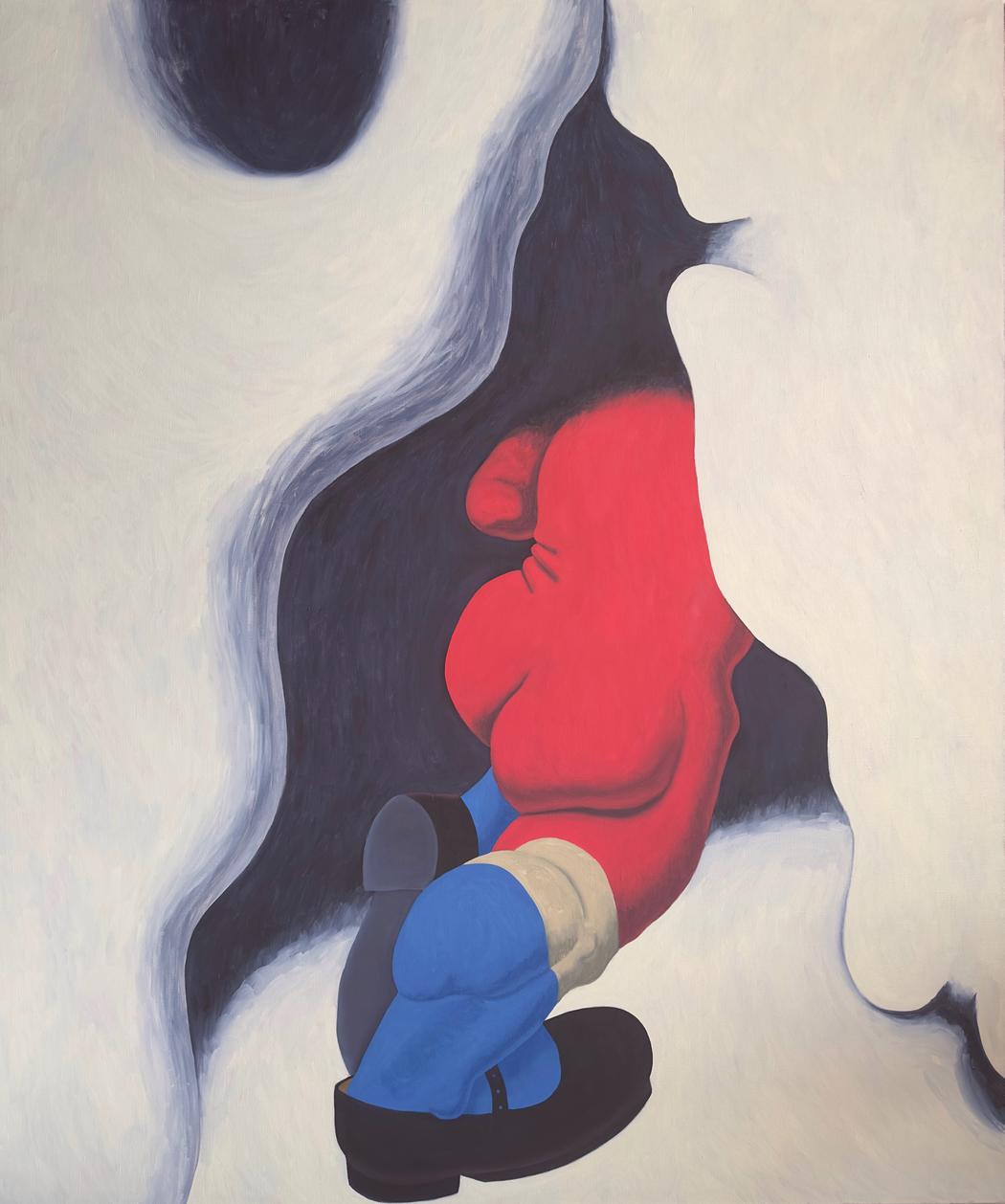 Oleg Tsyba | The Adventures Of Dante
Oleg Tsyba | The Adventures Of Dante
Who are your main artistic influences besides Kandinsky and Malevich, and how do they resonate in your work today?
Oh yes, Kandinsky and Malevich — or rather, their theories — influenced my understanding of art. Rubens is the greatest painter of all time. But when it comes to visual experience and sensation, I absolutely adore Philip Guston; the way he commands color and composition haunts me. Also Francis Bacon, with his fractured and distorted depiction of the human body. And, of course, Richard Diebenkorn, whose technical mastery of paint is remarkable.
As for composition itself, I think I still draw on what I learned from a Soviet manual called “How to Draw Comics the Marvel Way.” The title sounds rather absurd to me. I inherited the book from my sister, who, unlike me, attended art school. Incidentally, that edition contained one rule that I try to apply in every area of my life, not just in drawing: “Never add black tones just because you have leftover ink.” It’s about having a sense of proportion and the ability to leave a feeling of light incompleteness.
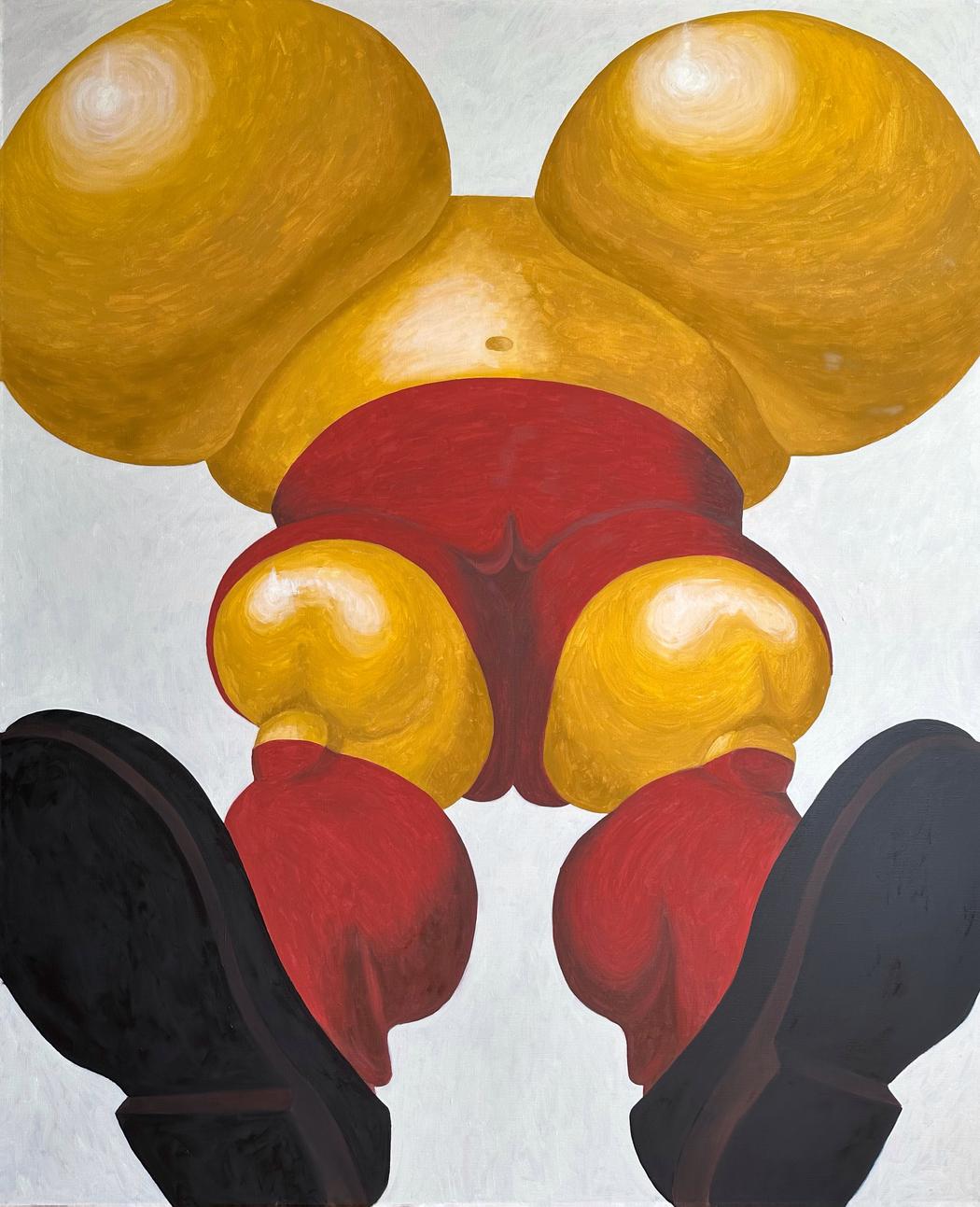 Oleg Tsyba | Mama
Oleg Tsyba | Mama
Some of your works are monumental in size. How does scale affect the way you construct meaning and engage the viewer?
Oh yes, about the sizes. Especially at the very beginning, it was psychologically very difficult for me to paint small works. Compositionally, it was hard for me to fit into a limited frame. But I’m working on it — over time, I’ve created some comparatively small pieces.
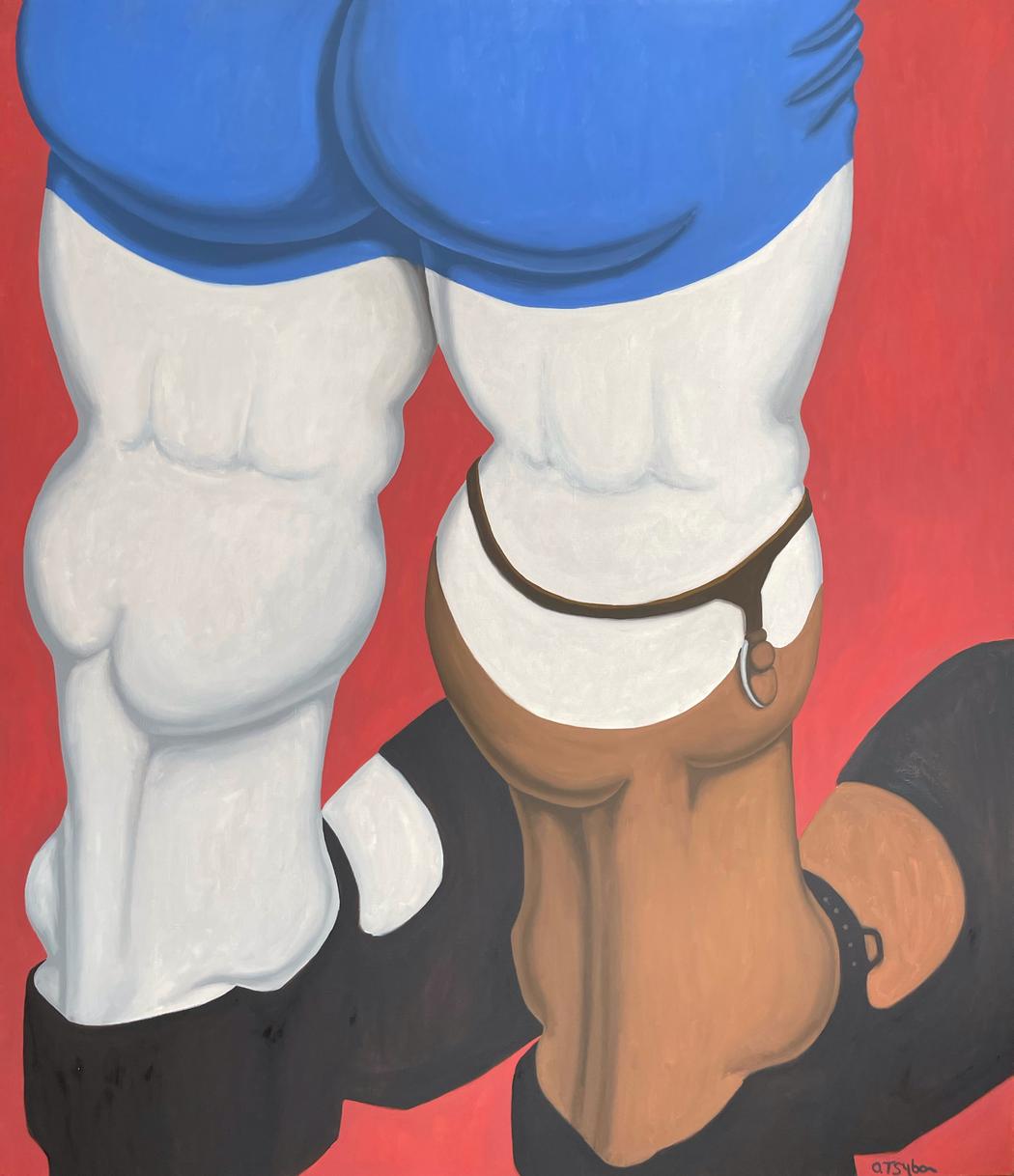 Oleg Tsyba | Achilles
Oleg Tsyba | Achilles
Your art is now part of international collections, including in Spain. How does exhibiting abroad change the way you think about your own work?
Of course, I’m very pleased that my work is being recognized internationally. At the beginning, my artworks were first noticed in Europe — I think that’s partly because there isn’t such strict censorship there as we have here.

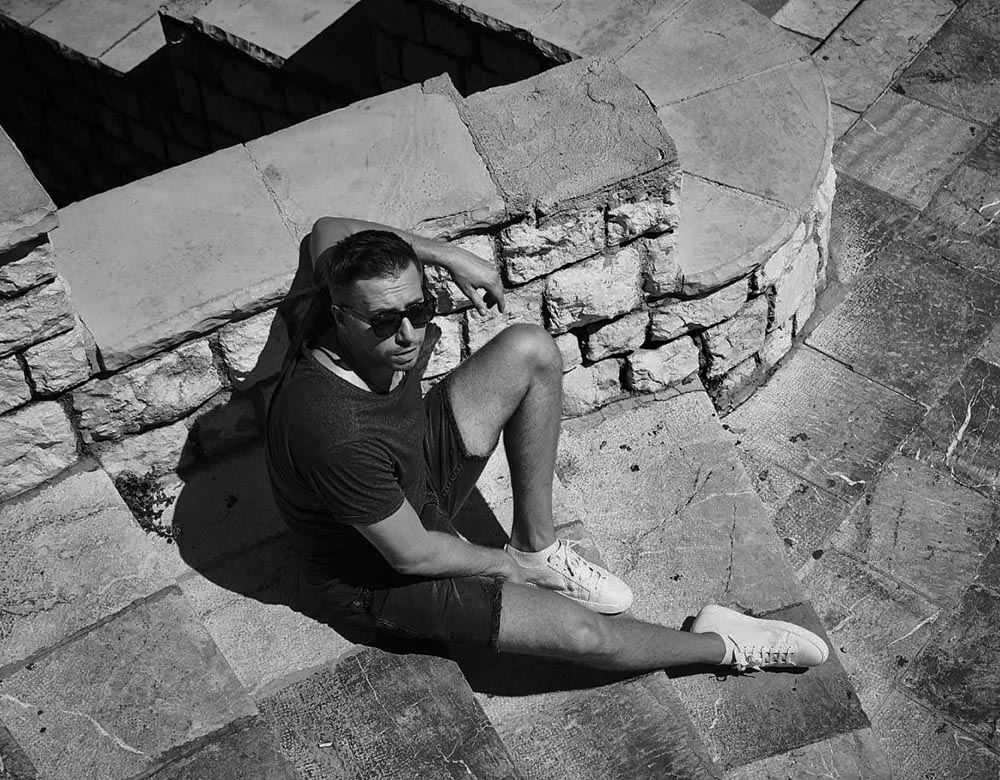
Leave a Reply